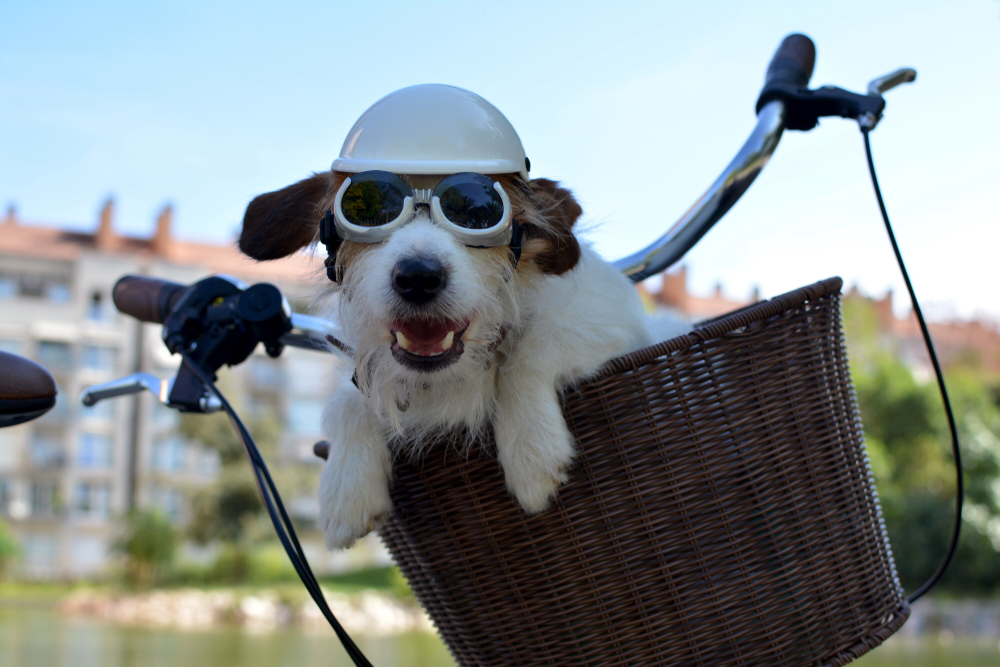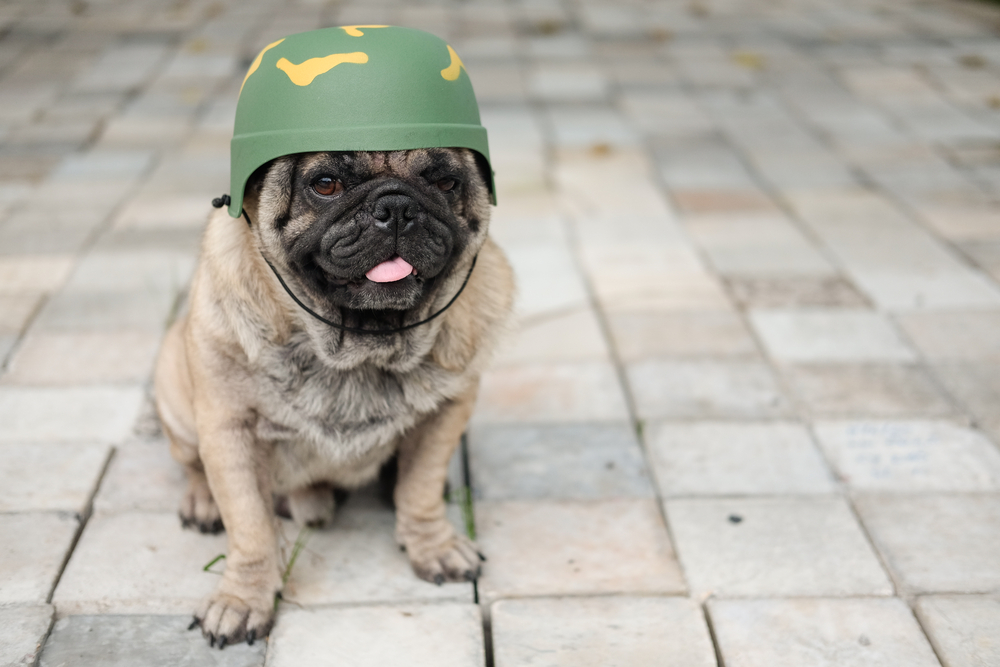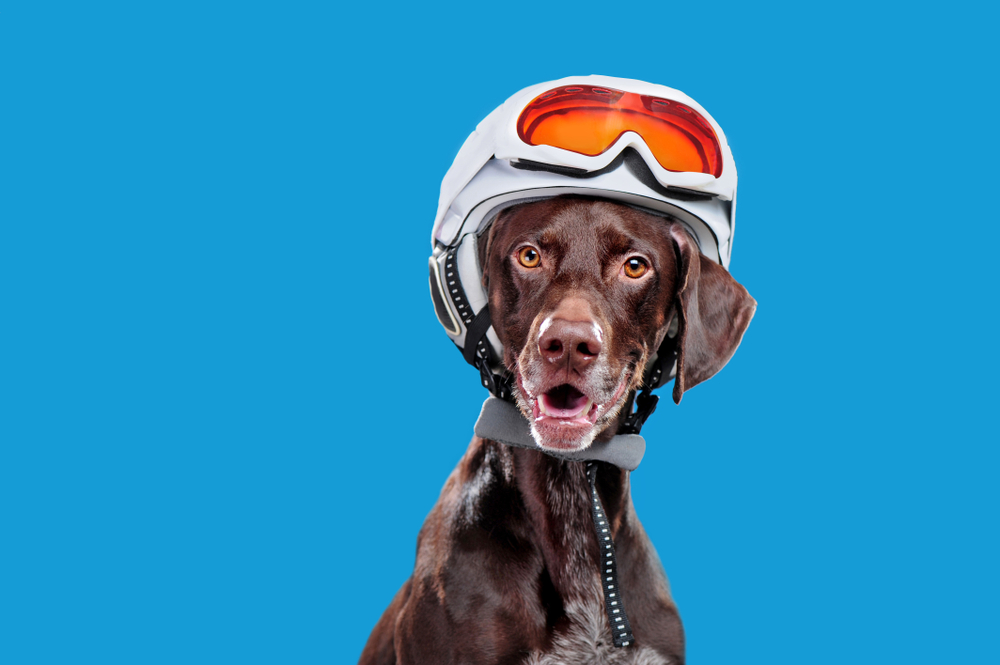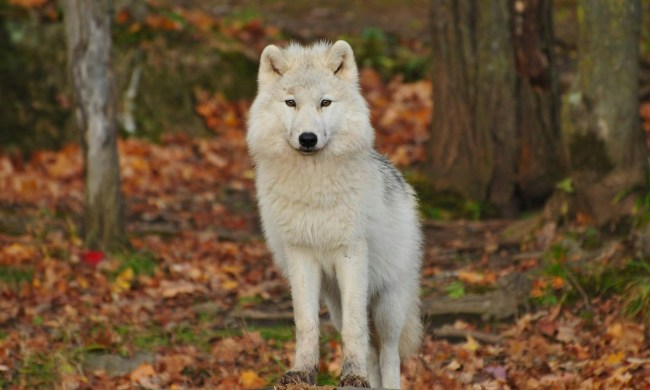Whether your favorite bike trail is relatively flat or you prefer to cycle on hilly terrain, bike riding is one of the best forms of cardiovascular exercise. You’ll increase your endurance and lower your risk of disease—all while enjoying the great outdoors. But if you want to go on a bike ride with your dog in tow, you’ll need to follow a few guidelines to ensure a safe, enjoyable ride for you and your pooch. We’ll share important safety tips, advice to help your pup adjust to bike rides, and everything else you need to know to keep your dog secure during your outing.

Is it safe to cycle with a dog?
If you’ve ever wondered if you can cycle with your dog, you’ll be happy to learn that the answer is a resounding yes. However, there are caveats. Brachycephalic breeds, such as bulldogs, are genetically predisposed to breathing problems. They also tend to overheat easily, “so rigorous exercise like biking is not a good idea,” Haylee Bergeland, CPDT-KA, RBT, told Daily Paws.
While introducing some activities, such as swimming and agility training, at a young age can be beneficial for your dog, experts say you’ll want to hold off on taking him for a bike ride until he’s older. According to the cycling pros at Owayo, you shouldn’t take your dog for a ride “until he has completed his growth phase and his bones have hardened.”
We recommend consulting your dog’s veterinarian before you take him on a ride. Your vet knows if your pup is healthy enough for biking and may even be able to recommend bike gear for dogs.
How long should a bike ride last with a dog?
J. Leslie Johnson, author of “Bike With Your Dog: How to Stay Safe and Have Fun,” asks pet parents to begin their bike rides with a brief warm-up walk and give the pup a cool-down period after each ride. At first, rides should last 10–15 minutes, which will allow your pup time to acclimate to walking alongside you or riding in a basket or trailer. Your pooch can accompany you on short bike rides daily, but experts say you should switch to biking every other day once your cycling route reaches the 2-mile mark.
You’ll also want to take the weather into account. If the pavement is scorching hot, wait until it cools down before taking a large dog out for a ride. Stick to biking in the early morning or evening to reduce the risk of heatstroke and burned paw pads.
What do dogs need to cycle safely?
So, you’ve decided to take your pup cycling with you. We hope you have fun. But before you set off on your next adventure, here are our top five safety tips for cycling with your dog.

1. Invest in a helmet and goggles.
Just as you should always wear a helmet while cycling, so should your dog. It’s also a good idea to pick up a pair of goggles to protect your fur baby’s eyes from the wind, the sun’s harmful UV rays, and road debris.
2. Take your pup biking in a trailer.
While large breeds can walk alongside you if they’re safely leashed (more on that in a second), small breeds may need a little help going the distance. Attaching a trailer to the back of your bike allows you to take your pooch along for the ride without taxing his tiny legs. Bike trailers are also fantastic for puppies and older dogs who may not have the stamina to accompany you when you hit the bike trails.
3. Make sure you use a bike leash.
Large breeds are more comfortable trotting alongside your bicycle than riding behind it, but that doesn’t mean you should allow your pup to walk unleashed. Not only will a proper leash leave your hands free to control your bike, but it also will keep Fido from running off after a squirrel.
4. Consider using a basket.
If the thought of pulling your dog behind you in a trailer unsettles you, you still have options. Attaching a dog basket to your bike allows you to keep your pooch in sight at all times. Look for a padded model like this affordable option from BABEYER to ensure your pup stays comfortable during the ride. We also recommend spending time training your dog to stay in his basket during rides. Start off slowly, and make sure he’s leashed into the basket and wearing a harness so he stays secure.
5. Dress your dog for the occasion.
As the weather continues to heat up, early mornings and late evenings become the best times for bike rides. Cycling during the coolest parts of the day will help you beat the heat, though you need to ensure that your pup is visible in low light. Whether he’s riding in a basket or walking alongside you, your dog should be outfitted in a reflective vest for maximum visibility. Many bike trailers are reflective, but you can also attach reflective tape to the back.

Biking with your dog is a fun activity, but you’ll want to do it safely. Make sure your pup is healthy enough for cycling, equip him with the proper gear, and don’t forget to warm up and cool down before and after each ride. Oh, and don’t forget the SPF and water for you and your pooch. Staying protected and hydrated are essential for pets and pet parents alike.



